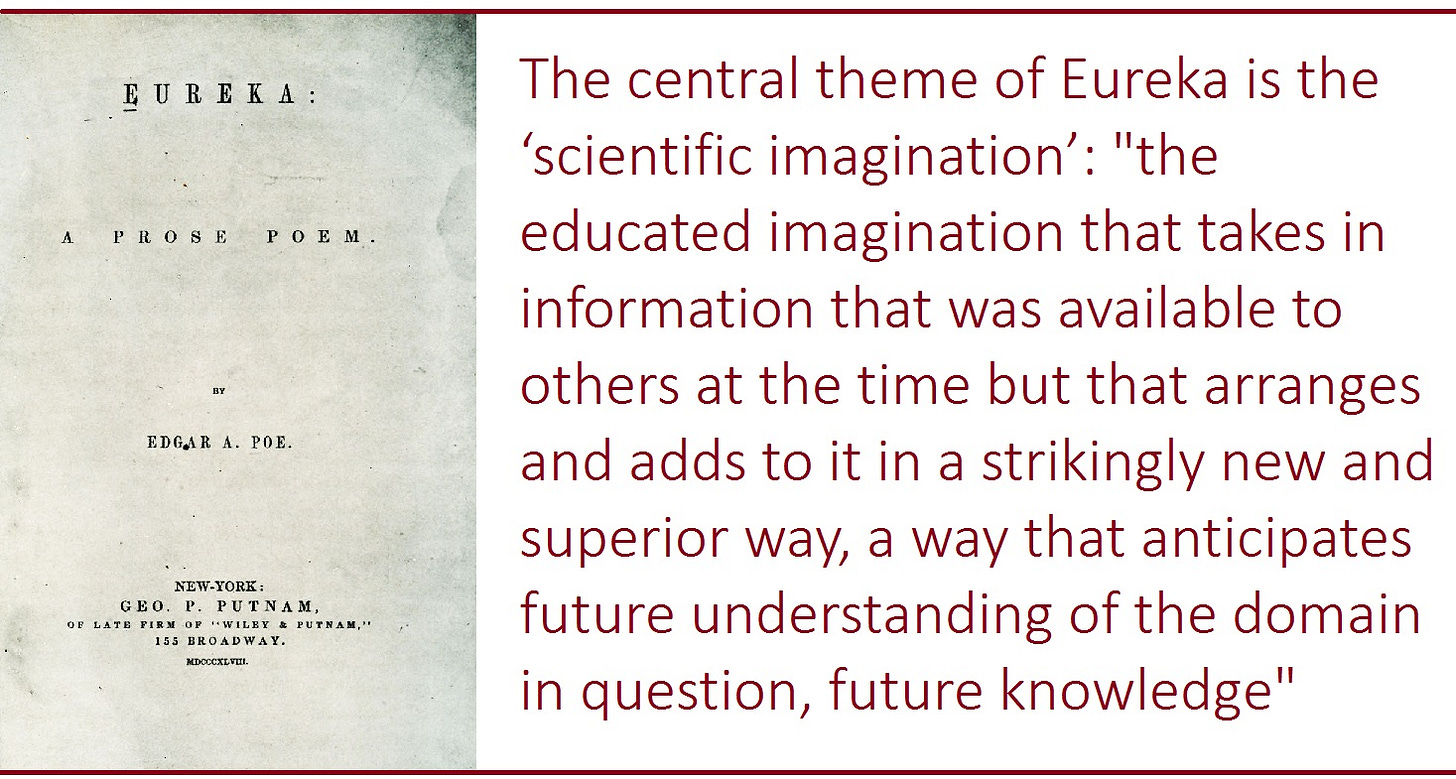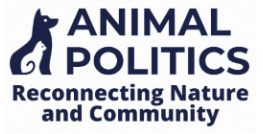Animal Politics: What is Compassionate Conservation?
My Eureka Moment: A Thesis on a Unifying Theory for Protecting the Natural World
For decades, physicists have suggested a "Eureka" moment is just around the corner - a moment when they'll produce a "Theory of Everything," a simple, unifying equation that explains all the mysteries of our universe. It is with that same sense of awe that I believe I have stumbled upon an equally stupendous theory - an "Environmental Theory of Everything”, if you will.
This environmental theory of everything could be defined as compassionate conservation - a multi-disciplinary understanding of our world such that all the practices and sciences of animal welfare and conservation biology unify in a way that compassionately protects all species, on an individual level, within a holistic application of conservation practice and policy. In other words, compassionate conservation brings together the seemingly disparate fields of animal welfare and conservation biology.
Similar to the four known fundamental forces of the universe - gravitation, electromagnetism, and the strong and weak nuclear forces - compassionate conservationists have identified four guiding principles that to help govern our relationship with the natural world: 1) First, do no harm; 2) Individuals matter; 3) Inclusivity of all animals; and 4) Peaceful coexistence.
I have taken the liberty of proposing a fifth principle - "Stewardship" - the careful and responsible management of the natural world entrusted to our care. The idea of stewardship helps to better define compassionate conservation as a discipline, and not just a philosophy. It reinforces humanity's unique role and responsibility as caretakers of the natural world.
My concept of "stewardship" has been influenced by the writings of Matthew Scully, who argues that "Animals are so easily overlooked, their interests so easily brushed aside. Whenever we humans enter their world, from our farms to the local animal shelter to the African savanna, we enter as lords of the earth bearing strange powers of terror and mercy." The principle of stewardship suggests that our role should be one of careful management and responsible care (mercy) for the natural world, rather than domination and destruction (terror).
Terror vs. Mercy
The words "terror" and "mercy" describe the two competing methods of conservation vying for legitimacy in the fields of science and the court of public opinion: traditional conservation and compassionate conservation.
Traditional conservation finds its roots in the religious belief of a once perfect "Garden of Eden" from which nature has "fallen" due to man's sin. The goal of traditional conservation is to "restore" nature to this idyllic (and unknown) state by eradicating any species that "invades" an environment where it is not native. The tools of traditional conservation are indeed terrible - hunting, bounties, introduction of viruses and disease, poisoning, trapping, and ripping.
In contrast, compassionate conservation suggests that man is capable of making better choices within the parameters of its guiding principles. Rather than viewing humans as separate from or opposed to nature, compassionate conservation recognizes our inextricable role and impact - both positive and negative. The focus shifts from restoring some imagined "pristine" state to carefully stewarding the natural world as it exists today.
Unpacking Dominion
The idea of human "dominion" over the earth is often cited as justification for traditional conservation's heavy-handed tactics. But a closer examination of the original Hebrew (Gen. 1:26) reveals a more nuanced understanding.
The word "subdue" (kabash - Gen.1.28)) is only applied to a hostile party, such as a military enemy. To not subdue a hostile enemy could lead to death. In the context of the biblical injunction to "subdue the earth," this has to do with clearing land for agriculture to ensure our own survival, not a mandate for domination.
The word "dominion" (radah - Gen.1:26)) refers to the rule of a benevolent king, who "delivers the needy," "has pity on the weak and the needy," and "redeems their life." (Psalm 72:8, 12-14) This is a far cry from the terror tactics of traditional conservation.
By way of contrast, an example of improper dominion (radah) is described in Ezekiel 34:4, where God rebukes a king for “not strengthening the weak, or healing the sick, or binding up the injured, or bringing back the strayed, or seeking the lost, but [instead] with force and harshness you have ruled [radah] them.” This passage makes clear that the true meaning of "dominion" has always been about protecting the defenseless and administering mercy, not domination through force and harshness.
Compassionate conservation proposes that our role should be one of careful stewardship - managing the environment in a way that minimizes suffering and allows for harmonious coexistence between humans, native species, and introduced species. This is the kind of dominion (radah/mercy) we should aspire to, not the domination and destruction (kabash/terror) exemplified by traditional conservation.
Ultimately, the injunction to exercise "dominion" over creation means we have both the privilege to rule and the responsibility to safeguard the natural world. A more nuanced, compassionate interpretation of this concept of “dominion” can guide us towards more sustainable, ethical conservation practices.
A Paradigm Shift
Compassionate conservation represents a progressive, enlightened discipline that reflects our growing understanding of animal cognition and emotion, as well as our evolving ethical sensibilities. By putting compassion at the center of our approach to the natural world, compassionate conservation charts a course towards true environmental stewardship - one that has greater potential for healing the planet and all its creatures, human and non-human alike, than traditional methodologies.
Managing Invasive Species
A critic might say, “Well, this all sounds well and good, but what about invasive species? How do you manage them?” A compassionate conservationist says that rather than trying to forcibly eradicate "invasive" species, we should instead manage them in a way that minimizes harm and allows for peaceful coexistence. This is because many introduced species are actually better suited to the changing environment than the "native" species we are trying to protect.
For instance, consider the brumbies (feral horses) in Australia. Traditional conservation efforts aimed to eradicate the "invasive" brumbies. However, compassionate conservationists argue that the brumbies have actually found refuge in new habitats and their populations may have become critical buffers against the extinction of other megafauna species. Rather than culling the brumbies, compassionate conservation proposes managing them humanely and allowing them to coexist with native species.
Then there are the nutria (a large semiaquatic rodent) in Israel. The nutria population has persisted for over five decades and has even developed a uniquely long tail, demonstrating its adaptation to the local environment. Compassionate conservationists argue that rather than viewing this invasive species as a threat, we should recognize the value it provides in terms of ongoing evolution and speciation, as well as its contribution to the overall biodiversity of the region.
Another relevant example of compassionate conservation is the case of the wolves on Isle Royale, MI. Traditional conservation efforts aimed to "restore" the Isle to some idealized, pristine state by eradicating the wolf population, which was viewed as an "invasive" species. However, the environment of Isle Royale has been shaped by human (and wolf) influences off and on for millennia, making it impossible to determine a "pristine" baseline.
The compassionate conservation perspective recognizes that the wolves, while introduced to the island, have now become an integral part of the ecosystem. Eradicating them could have unintended negative consequences for the overall biodiversity. Rather than viewing the wolves as a threat to be eliminated, compassionate conservation proposes managing them in a way that allows for peaceful coexistence with other species on the island.
Other examples of “invasive species” that have benefited “non-native” environments around the world include feral water buffalo in Australia, sambar in Florida, wild horses throughout the American West, and the world’s only population of wild dromedary camel which is thriving in Australia but has been extinct in their native Middle East and Africa homelands for at least 2,000 years. These invasive species consume plant matter indigestible to smaller native herbivores, which may reduce fire frequency, accelerate nutrient cycling, and shape plant communities.
As the research by Arian Wallach and others has shown, a significant proportion of the world's megafauna and other wildlife now exist primarily or solely in non-native ranges. Eradicating these introduced populations would actually do more harm than good, as they may be critical buffers against extinction for those native species.
The attempt to control or eradicate "invasive" species often has unintended ecological consequences, leading to population increases of other species or triggering cascading effects that harm native biodiversity. Compassionate conservationists argue that a more holistic, humane approach of managing these introduced species is ultimately more effective.
By recognizing the value that "invasive" species can provide, in terms of sustaining biodiversity, supporting threatened megafauna, and even driving evolutionary adaptations in native species, compassionate conservation offers a more scientifically-grounded and ethically-sound alternative to the terror tactics of traditional conservation.
A Responsible Discipline
We've come a long way since renowned psychologist B.F. Skinner dismissed animals as mere "conscious" beings "under stimulus control." Today, a mountain of scientific evidence fuels a revolution in the way we think about animal sentience - a revolution that traditional conservationists are struggling to keep up with.
Compassionate conservation represents a progressive, enlightened discipline that reflects our growing understanding of animal cognition and emotion, as well as our evolving ethical sensibilities. However, compassionate conservation is not without its critics. Some argue that it is too "soft" or "sentimental," suggesting that prioritizing individual animal welfare may come at the expense of broader biodiversity goals. These criticisms highlight the complex balance that must be struck between the welfare of individual animals and the health of ecosystems.
While these concerns are valid, it is important to recognize that compassionate conservation offers a more holistic, scientifically-grounded, and ethically-sound approach that considers the interconnectedness of all life forms. By acknowledging and addressing these criticisms, we can continue to refine and strengthen the compassionate conservation framework, ensuring that it effectively addresses the diverse challenges facing conservation efforts today. This, in turn, can lead to better outcomes for the planet and all its inhabitants.
Call to Action
Compassionate conservation represents a paradigm shift - a unifying "Theory of Everything" that has the potential to transform how we engage with the natural world. By putting compassion at the center of our approach, we can chart a course towards true environmental stewardship - one that heals the planet and all it’s creatures, human and non-human alike.
This is no easy task. Entrenched interests and ideological resistance will undoubtedly push back against this new thinking. Traditional conservationists, steeped in the belief of restoring an idyllic "Garden of Eden," will fight to maintain their terror tactics of hunting, culling, and eradication.
But the tide is turning. As the public becomes more aware of animal sentience and the unintended consequences of lethal population control, the moral and scientific case for compassionate conservation will only grow stronger. We are in the midst of a revolution in how we view our relationship with the natural world - a revolution that demands we expand our circle of moral concern to include all life, not just the species we deem "worthy" of protection.
The time has come to take the principles of compassionate conservation - first, do no harm; individuals matter; value all life; peaceful coexistence; and careful stewardship - and put them into practice. This will require updating policies, engaging with stakeholders, and developing innovative, humane solutions to complex conservation challenges. It will mean having the courage to challenge the status quo and embrace a more holistic, ethically-grounded approach.
Ultimately, compassionate conservation represents our best hope for healing the rift between humanity and the natural world. By recognizing our role as stewards, rather than domineering overlords, we can foster a future of harmony and flourishing - for all the creatures that call this planet home. This is the legacy we must strive to leave for generations to come.
The path forward will not be easy, but the rewards are immeasurable. Let us have the compassion to see the world as it is, not as we wish it to be. And let us have the courage to act with compassion, for the sake of all life on Earth.
Ed Boks is a former Executive Director of the New York City, Los Angeles, and Maricopa County Animal Care & Control Departments. He is available for consultations. His work has been published in the LA Times, New York Times, Newsweek, Real Clear Policy, Sentient Media, and now on Animal Politics with Ed Boks.









I understand that humans like program labels like Compassionate Conservation. I am not a big fan of orogram labels, but if it can change entrenched and lazy thinking-- i.e., the Garden of Eden mindset and the need to subdue and dominate--so be it.
The main message is that Humans are not superor. We share the Earth with all species. Less Hubris; More Humility.
Wonderfully written essay; “compassionate conservation” would protect my animal sentient being friends from the horrors of culling to preserve some human need to control the size of the populations of deer for example in my area where regular hunting days are authorized by the State for the shooting of a selected enormous number of these wonderful creatures for the good of the herd? Quiet, lovely creatures, harming no one, pass by my window where the concrete has taken over so very much of their habitat, they stop at my patio window and allow me to appreciate their extraordinary beauty, munch on the weeds overtaking my less than pristeenly groomed lawn, only to be offered up to state sanctioned days of hunting, when huge numbers become the trophies of hunters who say they are used for food. Sadly, they are often seen as road kill so there is the danger to deer and human in that all too common scenario.
The hypocrisy is then noted on Facebook where animal rescue organizations seek funding for vet care for single animals injured beyond salvation found at the side of the road suffering in pain and shock at their situation; thousands of dollars expended to make them whole again to be shot, if they survive the days, weeks of surgical and other interventions imposed by “caring” humans. Why not end their suffering immediately with euthanasia and put those dollars to work on compassionate conservation policies?